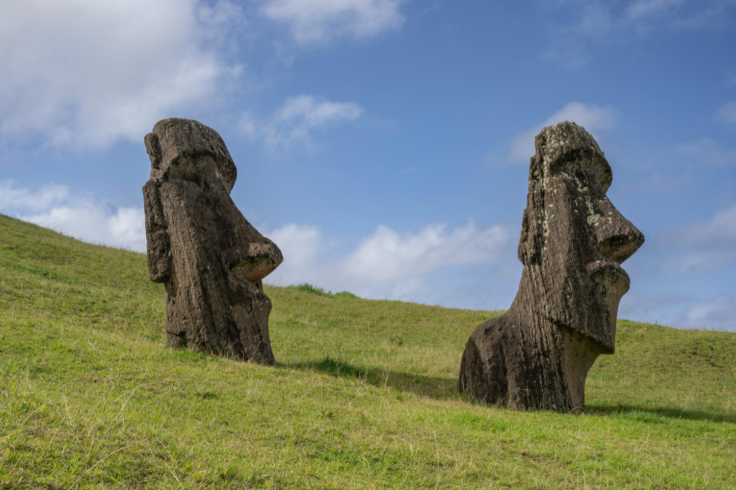Mysterious, New Easter Island Statue Appears In The Middle Of A Lake - Scientists Baffled: What Could It Mean?
This is the first discovered in a lakebed, prompting questions about its placement

A previously unknown moai statue which has resurfaced in a dried-up lakebed on Easter Island, has also resurfaced once more among internet sleuths as it continues to leave researchers puzzled about its origins and significance.
Discovered on 21 February 2023 in the Rano Raraku volcano crater, this find challenges the belief that all of the island's iconic monolithic sculptures were catalogued.
Scientists are now probing what this discovery means for understanding the Rapa Nui people's cultural and spiritual practices.
Unexpected Discovery in a Dry Lakebed
The new moai, measuring 1.6 metres tall and lying on its side, was uncovered by a team of scientific volunteers from three Chilean universities working to restore marshland in the Rano Raraku crater.
The lake, dry since 2018 due to climate change and human activity, revealed the statue hidden beneath tall reeds.
'This moai has great potential for scientific and natural studies,' said the Ma'u Henua Indigenous community, which administers the Rapa Nui National Park.
Unlike the island's approximately 1,000 known moai, typically found on coastal platforms or volcanic slopes, this is the first discovered in a lakebed, prompting questions about its placement.
Terry Hunt, a professor of archaeology at the University of Arizona, noted, 'We think we know all the moai, but then a new one turns up.'
Researchers believe the lake's depth of three metres for at least 200–300 years suggests the statue was not placed there recently.
Cultural Significance and New Questions
The moai statues, carved from volcanic tuff between 1300 and 1600 CE, represent the Rapa Nui people's deified ancestors.
These massive stone sculptures, often depicting stylised human faces, are typically found along the island's coast.
However this smaller statue, unlike the towering figures that can reach 10 metres and weigh 82 tonnes, suggests a possible distinct purpose, perhaps as a private or ceremonial monument.
Salvador Atan Hito, vice president of Ma'u Henua, stated, 'It's here in the lake and nobody knows this exists, even the ancestors, our grandparents don't know [about] that one.'
The absence of oral tradition about this moai indicates it may have been concealed for centuries, challenging assumptions about the completeness of Rapa Nui's archaeological record.
X posts reflect public intrigue, with @mtnpoet stating, 'A new statue suddenly appeared on Easter Island. That doesn't make sense.'
This is interesting. A New Statue Suddenly Appeared on Easter Island. That Doesn't Make Sense.
— Mountain Poet (@mtnpoet) August 6, 2025
Scientists thought they found them all.https://t.co/LUQTTh3MlI
While @realTuckFrumper notes, 'A new statue appeared on Easter Island, surprising scientists.' These reactions underscore the global fascination with this find.
A New Statue Appeared on Easter Island, Surprising Scientists https://t.co/MNlGNmVtyA
— Tuck The Frumpers (@realTuckFrumper) August 7, 2025
Future Research and Environmental Impacts
The discovery opens avenues for further exploration, with researchers planning to use radiocarbon dating to determine the statue's age and investigate whether more moai lie hidden in the lakebed.
'When there's one moai in the lake, there's probably more,' Hunt said, suggesting advanced techniques like ground-penetrating radar could reveal additional finds.
The drying of the lake, linked to climate change, has exposed areas previously inaccessible, offering a unique opportunity to study the island's heritage.
However, environmental threats, including coastal erosion and a 2022 fire that damaged other moai, highlight the urgency of preservation efforts, estimated to cost £1.5 million ($2,008,650) annually based on similar UNESCO site maintenance.
The Ma'u Henua community has no plans to move the statue, respecting the wishes of Rapa Nui elders to leave it in place.
This find transforms Easter Island into an active frontier for archaeological discovery, reshaping our understanding of its ancient past.
© Copyright IBTimes 2025. All rights reserved.





















